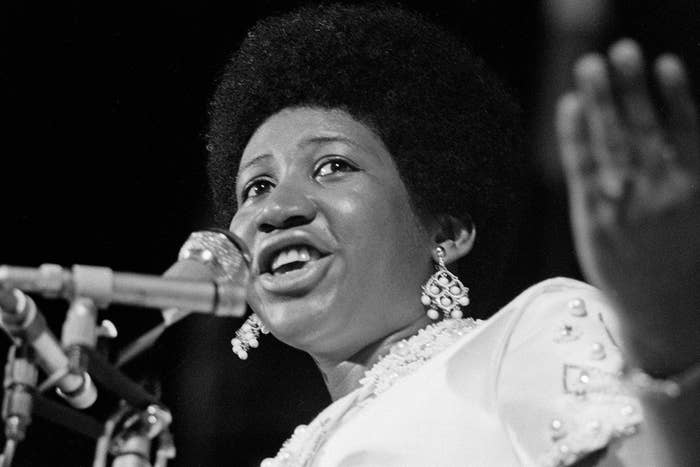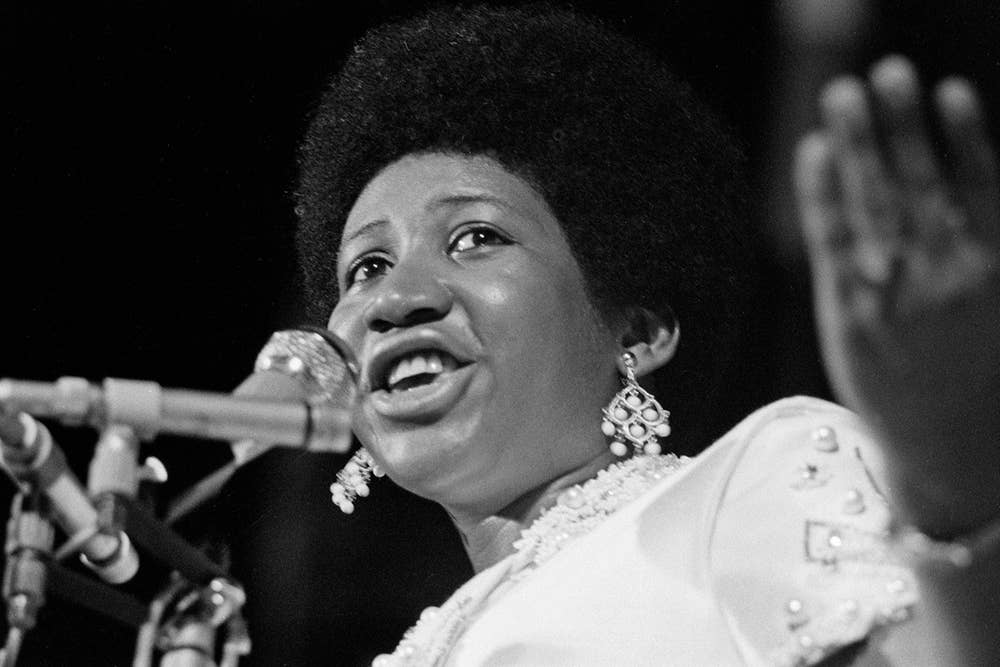
In the fall of 2018, just months after Aretha Franklin died, reports surfaced that brought her mourning fans a small measure of relief: The long-buried concert film Amazing Grace was finally, more than 45 years after its filming, going to come out. It ran at several festivals, spent a week in December at New York City’s Film Forum, and is now is to theaters nationwide in early 2019 after being picked up by distribution company Neon.
This is momentous news. Amazing Grace documents two nights of concerts at the New Temple Missionary Baptist Church in Watts in January 1972, with Aretha singing in front of the Southern California Community Choir, led by Rev. James Cleveland and conducted by the stunningly dynamic Rev. Alexander Hamilton. After countless pop hits, this was Aretha returning to her roots in the church, singing the gospel songs she started performing as a touring musician in her early teens under the tutelage of her father, legendary preacher Rev. C.L. Franklin.
Aretha turned in two nights of concerts that are among the best live performances from anyone, anywhere. The singer, then just a few months shy of 30, was in top form vocally. But how she approached the material was what was truly transcendent. Aretha treated gospel standards as jumping-off points for incredible improvisation, while having a mind-meld tightness with the choir backing her. The title hymn, in particular, turns into a 16-minute-long tour de force that brings many in the New Temple audience—and at one point Aretha herself—to tears.
Even for those familiar with the performances (the audio has been available the whole time), seeing the footage is something new entirely. Watching Aretha pour her heart out behind a lecturn or a piano; seeing Hamilton conduct the choir while dancing; witnessing audience members (including Mick Jagger and Charlie Watts of the Rolling Stones) overcome by emotion; looking at legends like C.L. Franklin and gospel legend Clara Ward who make appearances—all of it is overpowering. It will leave moviegoers crying, yelling, clapping, and in general acting like they were actually transported directly into the New Temple crowd all those years ago, if this writer’s viewing is any guide. Incredible performances are also delivered by the choir and her then-regular band of drummer Bernard Purdie, bassist Chuck Rainey, guitarist Cornell Dupree, percussionist Pancho Morales, and Cleveland and Ken Lupper on piano and organ.
"As great as [her] hits are, here she has the freedom to go completely beyond that in any direction that she wants to." -Aaron cohen
How we finally got the film is an epic narrative in itself. A live LP of the performances was released contemporaneously and, in the era of Jesus Christ Superstar and George Harrison singing “My Sweet Lord” (an instrumental version of which was actually used as exit music during the shows), was a big hit. And while it was no secret the concerts were filmed—the camera crew, led by director Sydney Pollack, was right there, and acknowledgement of them remains on the live album—the footage never came to light.
Initially, it was because of technical problems. Pollack had never shot a documentary before, and neglected to sync the sound and the images. But as time went on and technology developed (and the rights to the footage were purchased in 2007 by producer Alan Elliott) things became easier to fix.
Author Aaron Cohen was first shown the footage by Elliott nearly a decade ago, while he was researching a book about the concerts that would be published in 2011.
“Between 2009 and 2011, I interviewed just about all of the people who had a big role in the album who were still alive at that time, and I went out to the church where it was performed,” Cohen tells Complex over the phone. “When I was in Los Angeles, [Alan] Elliott showed me that raw footage for my research. Then in 2011, just after I finished the book, he showed me a just-about-completed version of the film.”
So if this magical footage has been available for years, why are we just seeing it now? There were many requests to make it available over the years, but Aretha turned them all down. There were a number of theories why: She wasn’t happy with the money; she was mad at the film industry after her own movie career stalled out; towards the end of her life, she didn’t want a public reminder about how she looked and sounded at her peak; she was mad about the technical issues that delayed the initial release. Cohen talked to people on her team to get the scoop, and came away more confused than when he started.
“I would talk to insiders in Aretha’s camp and one would say, ‘Oh, of course the reason was A,’ and then I talk to someone else who claimed to be close with Aretha who said, ‘The reason why she didn’t want it out was B,’” Cohen recalls. “I honestly don’t know why. I don’t know what her reasons are. What I do know is that she never said she never wanted it out.”
Now, with approval from Aretha’s estate, everyone will be able to see this epochal series of performances. If all you know of Aretha Franklin is “Respect” and “Think,” seeing the freedom and skill she brings to songs like “What a Friend We Have in Jesus” and “God Will Take Care of You” will make you rethink what you know about her, about soul music, and about singing as a whole.
“She’s at a point where she’s stretching out,” Cohen says of the concerts. “If she wants to sing for 11 minutes, she can sing for 11 minutes. If she wants to improvise over chord changes in a certain way, she can do that. As great as those hits are, here she has the freedom to go completely beyond that in any direction that she wants to.”


